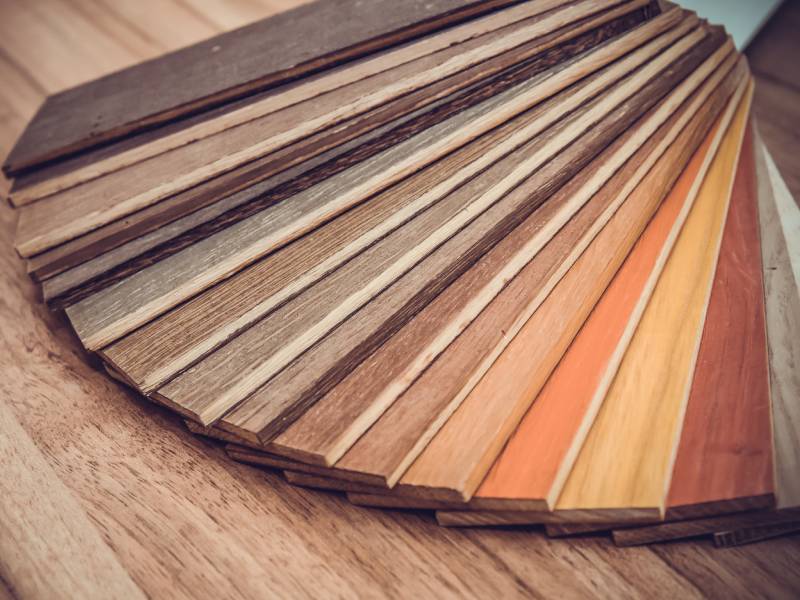Hardwood Floors
Hard Wood Flooring: Your Options
Before you make any decision on the new hardwood flooring for your house, you need to understand the differences between the commonly available types of hardwood flooring. Choosing the wrong type of flooring for your needs could lead to rapidly increasing upkeep and repair costs or the need to replace the floor entirely.Hardwood floors offer many benefits, including incredible natural designs and a sturdy surface. Some forms of hardwood flooring may also offer a comfortable surface for areas where prolonged standing is expected. The options are there, all you need to do is choose the right one for your home.
There are 5 main types of flooring in the hardwood category. Laminate flooring, solid hardwood, engineered hardwood, bamboo or cork. Each of these options has pros and cons, some may be pricier than others or damage more easily.
Not every type of hardwood is suitable for every room or situation. To learn more about the different hardwood flooring options, read the sections below.

Solid Hardwood
Visually, it's very easy to recognize this type as hardwood flooring. Solid hardwood is made from planks of different thickness and they are cut from a single piece of wood.Most solid hardwood floors are about 20 millimeters thick, although you may find thinner or thicker options on the market. The planks are cut in such a way that they fit together in grooves, keeping the flooring in place without unsightly gaps.
Depending on your choice of wood, the flooring can be extremely resistant to damage, which means that it will have fewer scratches and gouges over the lifespan of the floor. Solid hardwoods can be susceptible to moisture damage, so keep that in mind when deciding what floor to install.
Cost: The price range of solid hardwood flooring vary according to the finishing, but they can cost anywhere from $2 to $12 per square foot.
Engineered Hardwood
Engineered hardwood is actually made of several layers of wood that are glued together with adhesive, which produces a plank of varying thickness, although most engineered hardwood is 14 millimeters wide. An additional wood surface is then glued to the top of the planking, adding another 4 to 5 millimeters.The benefits of an engineered hardwood floor include the durability of hardwood at a cheaper cost and high resistance to temperature fluctuations and humidity-related damage.
Engineered hardwood will usually cost between $3-$10 per square foot. Because engineered hardwood is created, there are more options of color and style.
Bamboo and Cork Flooring
These two flooring options, while sold as hardwood, are not actually made from hardwood. Bamboo flooring is made from bamboo, which is a hard grass native of Asia. While not technically a wood, it is still a hard surface perfect for flooring. One of its best features is the incredible resistance to humidity.The flooring panels are made of highly compressed bamboo fibers molded into a plank shape that fits together. For those who are environmentally conscious, bamboo can be a perfect choice, since bamboo naturally replenishes much faster than traditional hardwood trees. Bamboo is also softer than traditional hardwood, offering greater comfort.
However, bamboo does have downsides. The material is more prone to surface damage and it's more expensive because it's imported.
Cork comes from the cork oak tree. Like bamboo, it's a highly renewable resource and provides a unique look and feel to any home. It is also much softer which makes for greater comfort.
Unfortunately, just like Bamboo, cork tends to be more expensive than traditional hardwood flooring. However, the cost depends on the thickness of the floor, the quality of the material and the type of finish.
Costs: Bamboo prices range from $5 to $10 per square foot, while cork ranges between $5 and $14 per square foot.
Laminate Flooring
Out of all the options listed, laminate flooring is probably the cheapest option and you can install it yourself with relative ease. Laminate flooring isn't actually wood flooring but adhered layers of compressed fiberboard with a top layer that is typically a photo image of wood or wood planking.Even the highest quality laminate flooring is going to fall short when compared with wood flooring. Laminate flooring is also vulnerable to moisture damage, and once damaged it's nearly impossible to repair and has to be replaced.
Cost: Typically costs around $4 per square foot.
Now that you have some idea of the types of hardwood flooring available, you can make a decision on which type of flooring is right for your home.
Some options offer style over comfort, some have better pricing or durability and others are the whole package but at a much higher price. Only you know which option is right for your home.
